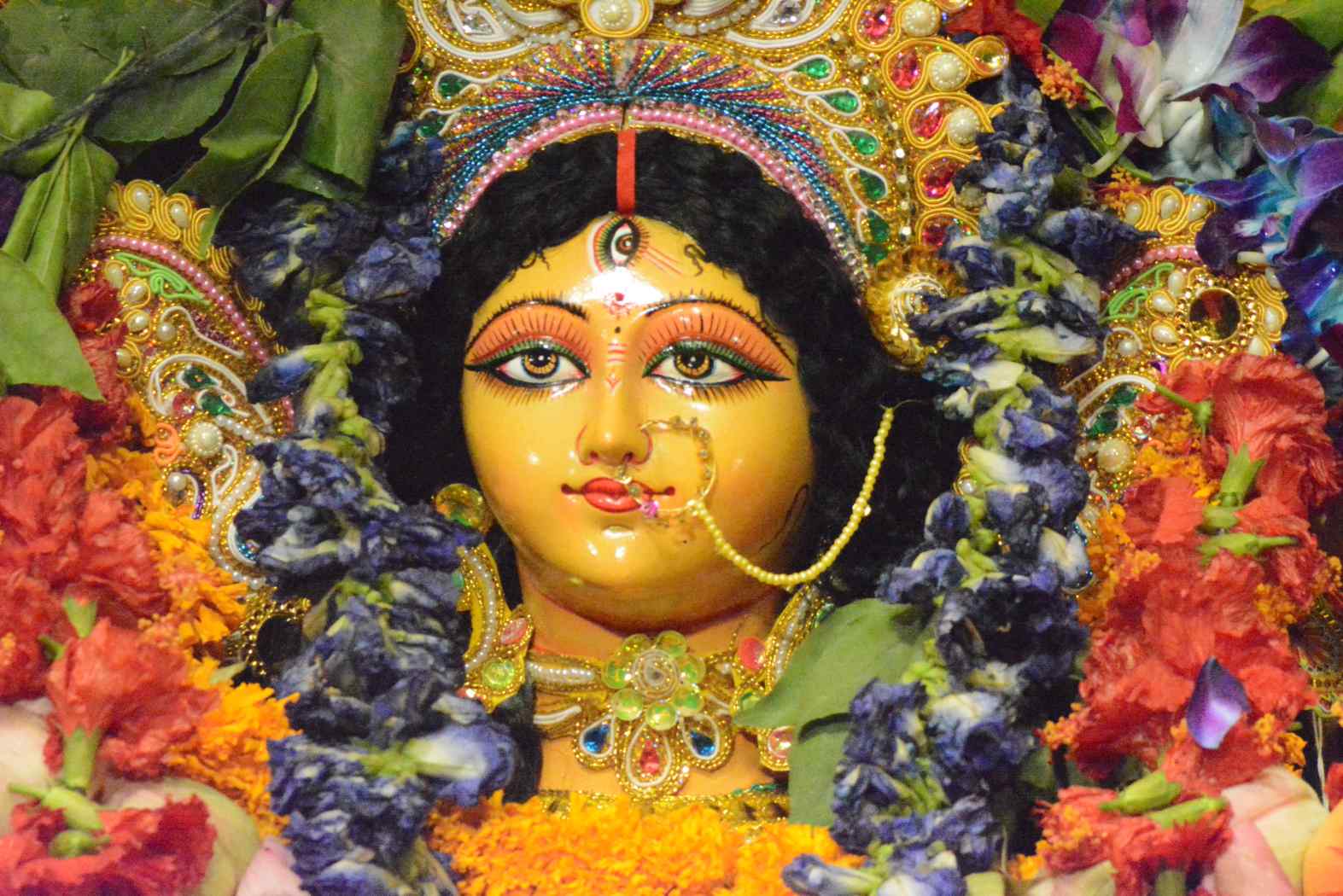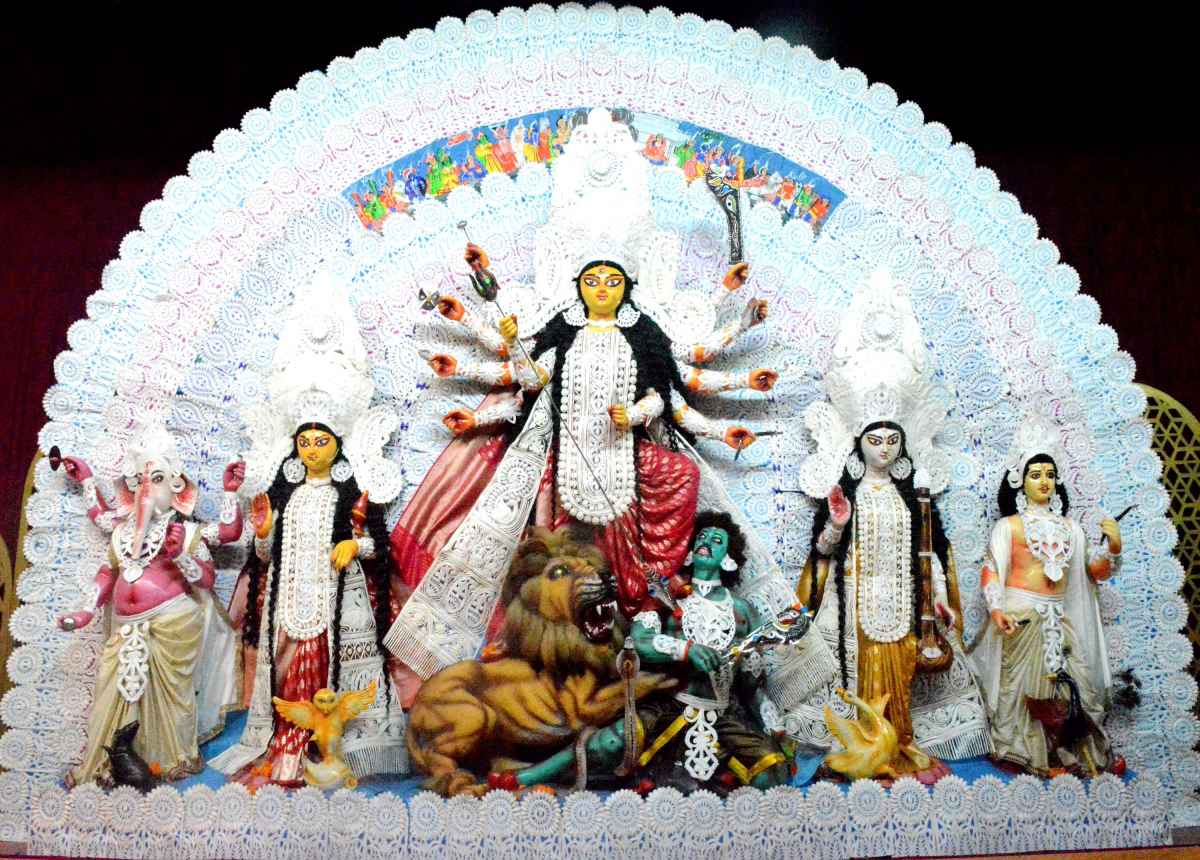Each day of Durga Puja is marked with special rituals. Bengalis worship Durga in her form as Mahishasura Mardini (Slayer of Mahishasura) during these auspicious days.
Priests offer prayers, flowers, fruits, and sweets to the Goddess. Pushpanjali is one of the most important rituals, where devotees offer flowers while chanting holy mantras. Many families also perform Aarti by lighting lamps in front of the Goddess.
Priests offer prayers, flowers, fruits, and sweets to the Goddess. Pushpanjali is one of the most important rituals, where devotees offer flowers while chanting holy mantras. Many families also perform Aarti by lighting lamps in front of the Goddess.
Another important ritual is Sandhi Puja, performed at the juncture between Ashtami (eighth day) and Navami (ninth day). It is believed that this is the moment when Durga finally defeated Mahishasura.
The entire community seems to come together in prayer, filling the air with deep devotion. Along with prayers and rituals, devotees prepare a variety of dishes and offer Bhog to Goddess Durga, Goddess Lakshmi, Goddess Saraswati, Lord Ganesha, and Lord Kartikeya.
On the final day of Durga Visarjan, married women participate in Sindoor Khela, a vibrant and joyful ritual.
Before the immersion of the idol, vermilion (sindoor) is first offered to the Goddess. Then, women smear sindoor on each other and seek blessings from elders for a long and happy married life.


